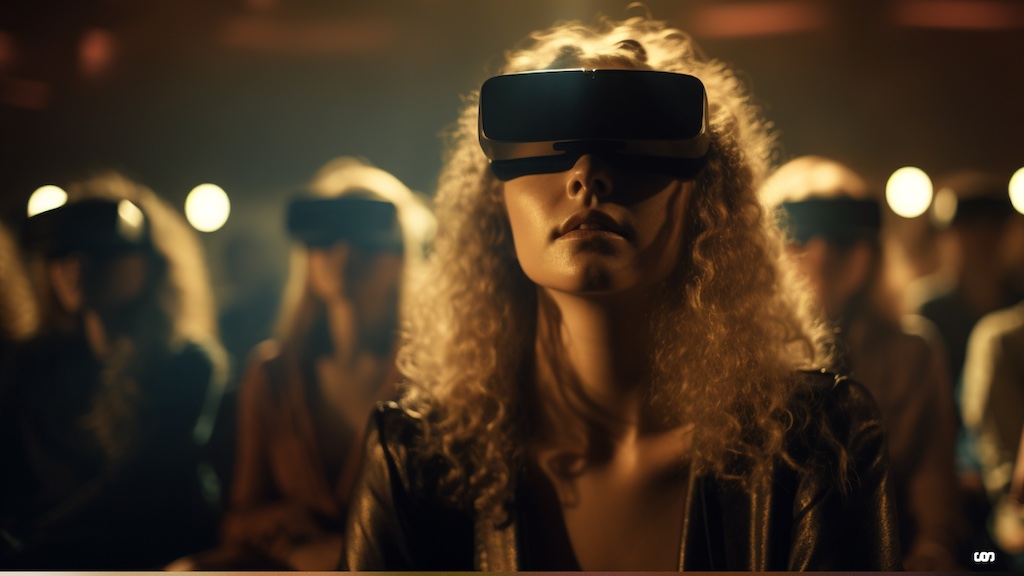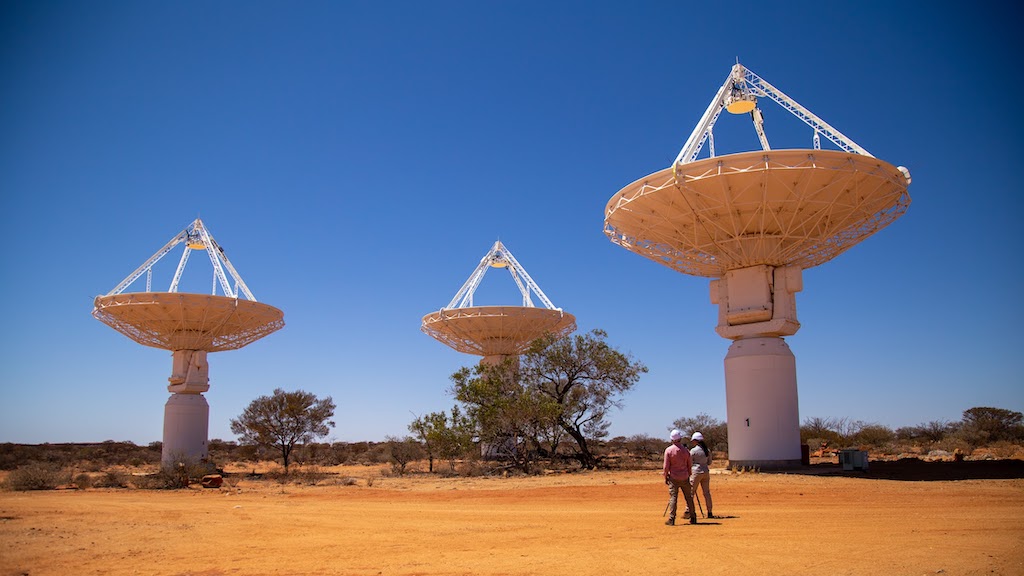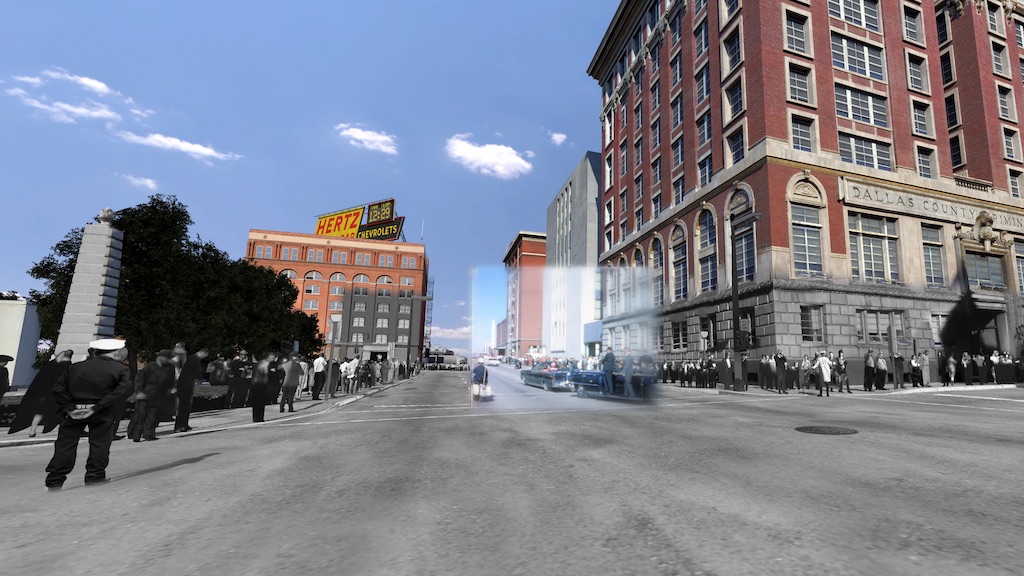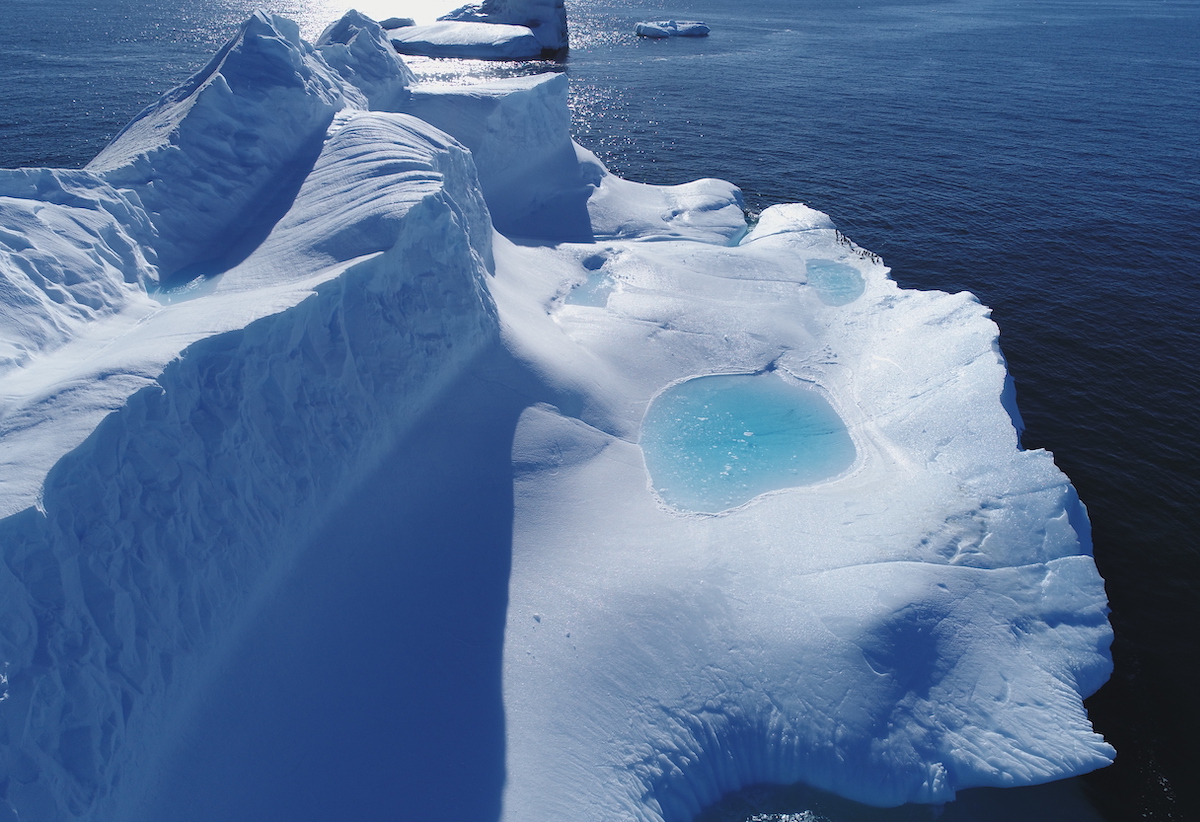Why it’s time for creators to get immersed in VR

With Apple TV+ recently adding immersive originals to its lineup, Mark Layton delves into the opportunities, financial models and potential return on investment for producers that make the quantum leap into VR content.
Virtual reality and immersive content have, for the best part of a decade, remained largely within the province of gamers and exhibition attendees. But there are changes afoot that signal new opportunities on the horizon for producers, particularly of factual content, who are willing to venture into the third dimension.
Streaming service Apple TV+ revealed in January that it was adding a selection of original immersive programming, specifically for its tech giant owner’s new Vision Pro mixed reality headset. Its initial line-up includes Prehistoric Planet Immersive, a short film based on the existing Apple TV+ dinosaur show from Jon Favreau, and Atlantic Productions’ Adventure, which allows viewers to experience footage as though they are joining extreme athletes in remote locations.
Disney+ is getting in on the action too, with some ‘environments’ based on locations from IP such as Star Wars, Monsters Inc and Marvel’s Avengers to explore, as well as some more straightforward 3D versions of movies like Elemental and Encanto. Mouse House CEO Bob Iger enthused on the ability of the Vision Pro to bring viewers closer than ever to Disney content.
However, as big a step as this might be for Apple TV+, even its new originals remain in 180-degree 3D 8K – resembling something closer to a more traditional TV viewing experience. But some producers have been working with fully 360-degree productions for some time now, transporting viewers right into the middle of their shows and documentaries.
There are advantages and, crucially for some, unexplored revenue streams available once they take that step into virtual reality.

White Spark Pictures has taken VR doc ‘Beyond The Milky Way’ to venues in Europe and Australia
Demand exceeds supply
Briege Whitehead, founder and creative director at Australian factual indie White Spark Pictures, has feet firmly in both the 2D and 3D worlds. She founded the firm in 2017, with the company made up of two divisions: one producing factual content for the international TV market and one focused on VR, immersive and interactive films.
White Spark’s credits include factual TV shows Impossible Planet and Poisonous Liaisons, as well as feature-length doc The Last Horns Of Africa.
On the immersive side, White Spark launched the Brian Cox-narrated VR documentary Beyond The Milky Way last year, following the global effort to build two of the world’s largest radio telescopes and virtually transporting viewers across the stars.
Meanwhile, 2018’s The Antarctica Experience gave audiences the chance to ‘visit’ one of the world’s most remote locations, with the film accompanied by a 2D companion doc, The Real Antarctica Experience.
“We’ve got an entire VR slate and we have an entire TV slate, and many of those things crossover, especially because we’re gaining access to some locations that have never been captured on camera before,” Whitehead tells TBI. “If we’re already getting the budgets for these productions through our VR side of things, why would we not also be trying to do a lot of those things in television?”
She adds: “Producers should look very seriously at if they want to finance their productions [in both 2D and 3D] and then you come out with two very commercial, highly marketable productions that are fit for television and VR.”
Whitehead says that the “economy of scale is really affordable” when shooting in VR, as well as the more traditional 2D. “We’re finding it’s usually between a 15% to 30% increase on budgets to be able to do both,” and that “you’d be more than getting that back” by selling the two different productions “even if you just released it in Australia and New Zealand.”
On the practical side, Whitehead explains: “Your pre-production is largely the same. In production, VR doesn’t take a huge amount of time – we shot all of The Antarctica Experience in two weeks with a crew of three people in the field. It’s more on the post-production side of things where costs really do start to come in. It’s very hard to fix it in post – even harder than usual.”
However, the opportunities are there for VR content, with Whitehead revealing that, at least for White Spark, demand is exceeding their supply. “Our current demand, just in Australia and New Zealand, is 10 VR films a year and currently, we can only keep up with one.”
Buyers are also increasingly willing to contribute to the budget, and while the likes of Apple, Meta and Pico have been partnering with content producers for a home headset experience, much of the business is to be found with venues such as museums and cinemas.
“Originally, we were coming up with the entire budgets ourselves and then putting them into museums. Now we’re seeing the museums and the venues put in money for the budgets. So we’ve created entirely new pathways to audience and entirely new pathways to revenue,” says Whitehead.
“We deliberately haven’t been putting our films online yet because the demand is there in shared mass experiences. If I had a lot of money, I would buy and manufacture my own VR headset.”
Instead, in November, White Spark launched Surround Sync, a new tech business that aims to allow hundreds of viewers to experience virtual reality productions at the same time, with Whitehead serving as CEO of the new venture.
It aims to be a cost-effective solution for cinema operators, sidestepping the need for significant investment while leveraging existing cinema venues and infrastructure.

Targo Stories’ latest doc, ‘JFK Memento’, puts viewers on the ground of the 1963 assassination
Producing for mass appeal
Working purely in VR and immersive content is Paris-based Targo Stories, founded in 2017 and with documentaries available for home consumption via Meta and Pico platforms, as well as Viveport and YouTube VR.
Co-founder and CEO Victor Agulhon says that his aim is to make immersive content that is “meaningful for mainstream audiences,” noting that the relatively few headsets that are being used – and the high price point barrier for entry – means content must “speak to everyone” to cut through.
Indeed, according to research firm Statista, the number of VR headsets sold worldwide is expected to surpass 34 million in 2024. Not a small figure, but a drop in the ocean compared to the more than 1.7 billion TV sets in the world.
Targo Stories’ most recent immersive documentary is JFK Memento, recounting the 1963 assassination of US president John F Kennedy. The title features narration from witnesses, journalists and investigators, and brings them to life by virtually placing viewers in 360-degree recreations of key locations, such as Dealey Plaza and the Texas School Book Depository, overlayed with images and footage of the events of that day.
Previous Targo docs include Surviving 9/11, about the 2001 Twin Towers attack; Solo To The South Pole, following polar explorer Matthieu Tordeur; and culinary title Behind The Dish.
“We pick a moment that most of us have already seen on a traditional TV, but we want to show how immersion can give you a new perspective on all these stories,” says Agulhon. “History is one side for us, the second is entertainment stories, and we’ve done documentaries on someone crossing to the South Pole on his own, and a sort of Chef’s Table in VR, in which you get to dive into the behind the scenes of the cooking world.”
Agulhon believes the home consumption market is set to grow over the coming years, with devices like the Vision Pro marketed as a spatial computer, rather than a gaming device. That could open up a whole new audience to VR.
“We are seeing an evolution that’s ongoing right now,” explains Agulhon. “I think VR headsets are going to be shifting progressively from being a gaming-oriented platform to being a mainstream media consumption platform.”
What producers need to focus on is supplying the demand for quality immersive content that will draw consumers to these devices, he says.
“Our most-watched documentaries have millions of views in VR, so you can reach a serious and real audience when you have the right topic that’s treated in the right way.”

White Spark’s ‘The Antarctica Experience’ was accompanied by a 2D companion doc, ‘The Real Antarctica Experience’
Co-producing with venues
Once producers have made that leap into VR content, they need a distributor that knows the terrain – and that’s where firms like Lucid Realities, come in.
The producer-distributor, also based in Paris, specialises in location-based experiences, rather than the home market, with Alexandre Roux, head of distribution, suggesting that the current usage of personal VR headsets is for “like 90% gaming content.”
Instead, Lucid Realities has worked with cultural venues, such as the Louvre and the Musée de l’Orangerie in Paris, the Casino Luxembourg, and the Serpentine Galleries in the UK, involving them in the early stages of their immersive experiences.
“We sign many co-productions with huge cultural institutions. It’s a way to greenlight a first showcase, and that’s really important to then [be able to] promote the projects overseas and to target, other venues in the international market.”
The company’s distribution arm, Unframed Collection, has meanwhile developed an online platform for producers to more easily sell their immersive content worldwide.
“They submit their programs to the platforms, we will do an editorial and technical check, and then we will publish the programs in the platform,” explains Roux. “We propose two different business models to the cultural venues. The first one is a pay-per-minute system. We can get all the screening data from the venues sent to the platform and will automatically generate revenues. We will get 30% as sales agents and we will redistribute 70% to the company’s copyright holders.
“The other business model is a flat fee based on an estimate we do in collaboration with the copyright holders,” says Roux.
While moves into immersive content are being made by platforms such as Apple TV+, it might be small steps rather than giant leaps for the moment. Unless 2024 becomes the unlikely year of sky-rocketing VR demand from streamers, we aren’t quite on the cusp of an explosion in home consumption.
Nevertheless, quality content is in demand from existing VR platforms like Meta Quest TV, while museums, institutes and other cultural venues are loosening their purse strings to innovate their offering and provide a more natural home for some of these augmented experiences.
There is opportunity to be found, for producers willing to rethink where – or where else – their content might be placed and if that extra cost is worth the return.



